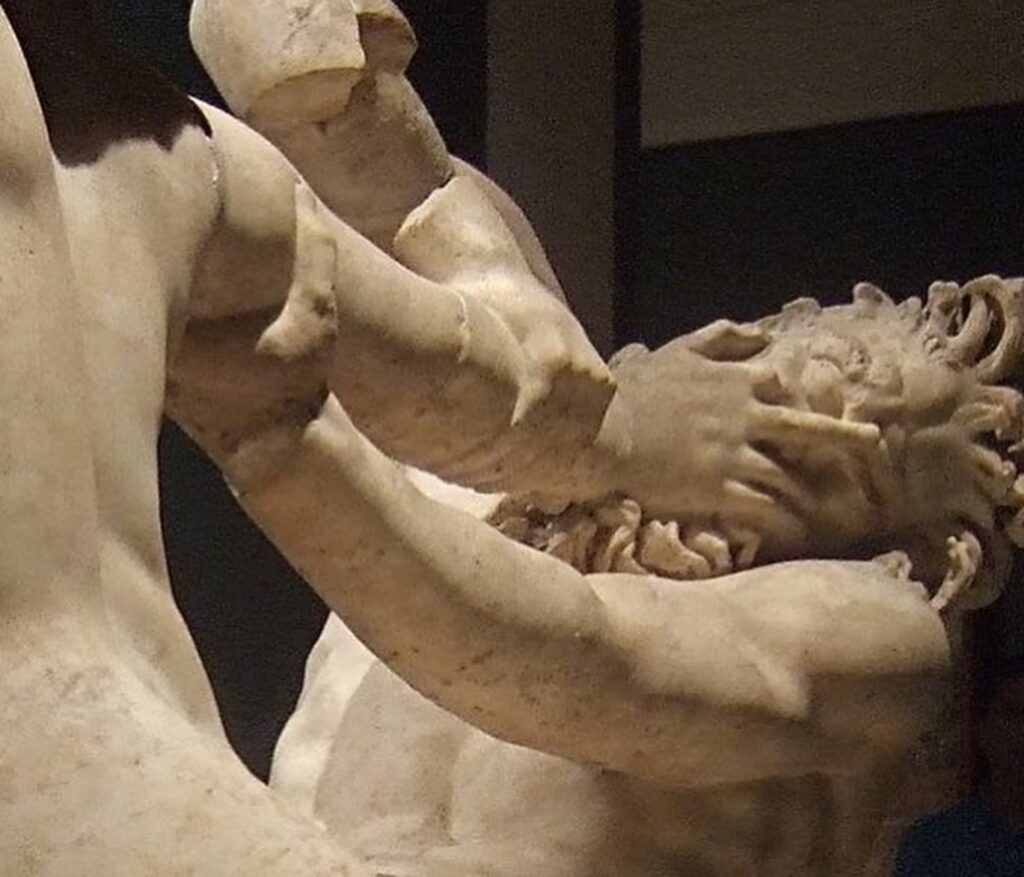Hellenistic in origin and striking a chord with an appreciative Roman audience, this statue group has all the things! (and not one of them politically correct…)
Shown is an amorous (to be polite) satyr grasping at the voluptuous body of a resisting hermaphrodite (in the classical world, the mythical offspring of Hermes and Aphrodite with male and female genitalia). The pairing is one of the most popular examples of ‘symplegmata’ (as these erotic entanglements are politely referred to in scholarly literature), perhaps invented by the Hellenistic sculptor Kephistodotos in 3rd century B.C. Pergamon to much acclaim (according to Pliny). The original does not survive, but a staggering number of copies (over 30 in various media) from the Roman world do, with the most complete being an under life-sized example in Dresden.



This one was excavated in Oplontis (1977) in the Bay of Naples – it is life-sized and boisterous, and shows the compositions’ genius. The satyr grasps hungrily at the hermaphrodite’s resisting flesh and encloses her lower body with his tautly muscled legs. His prey twists sharply to the right, clawing at the assailants face (coming quite close to gouging out an eye) and grasping his foot (my favorite detail). While spiritedly resisting however, the hermaphrodite leaves another ambiguity that would have delighted a Roman audience: one leg is thrown over the satyr’s, effectively immobilizing him as well.
The theatrical surprise-factor of the hermaphrodite’s anatomy that would have delighted a Roman audience was heightened as it was displayed in Oplontis. Placed cunningly at the the edge of a reflecting pool, the naughty bits would have been on full display to the discerning and curious viewer.




